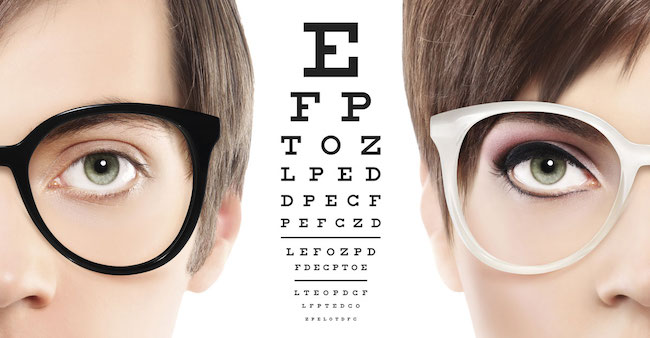Visual Acuity and 20/20 Vision
 20/20 vision has become a standard metric for good eyesight and is synonymous with vision clarity and sharpness. 20/20 is a measurement of vision acuity but what is it and what does 20/20 mean? Dr. Rachael Sweeney, Dr. Jonathan Chen, and Dr. Lay Nim from Vision Source Insight Eyecare in Sandy Springs, GA explains.
20/20 vision has become a standard metric for good eyesight and is synonymous with vision clarity and sharpness. 20/20 is a measurement of vision acuity but what is it and what does 20/20 mean? Dr. Rachael Sweeney, Dr. Jonathan Chen, and Dr. Lay Nim from Vision Source Insight Eyecare in Sandy Springs, GA explains.
Visual Acuity
Visual acuity is the one of the most common vision measurements and is the ability for a patient to identify letters or numbers on a standardized digital eye chart from a specific distance. It measures the relative clarity and sharpness of eyesight under standardized conditions but offers little to no indication of overall vision health. Vision Acuity tests are performed by optometry professionals as part of a comprehensive eye exam and are performed in controlled environments with good lighting and carefully measured distances from the patient to the eye chart.
Three major physical and neurological factors determine visual acuity:
- Accuracy and clarity of the cornea and lens of the eye in focusing light onto the retina.
- Sensitivity of the nerves in the retina and vision centers in the brain.
- Ability of the brain to process information received from the eyes.
20/20 Vision
Visual acuity typically is quantified with Snellen fractions (named after Herman Snellen, an ophthalmologist from Holland who developed this measurement system in 1862) and are reported as the test measurement / standard measurement. In the UK standard vision is considered 6/6 (Using 6 meters as the standard distance) but in the US this is characterized by 20/20 vision. (Using 20 feet as the standard distance to view a 20/20 letter that is 8.75mm in height)
What does 20/20 Vision Mean?
20/20 vision is the normal measurement for clarity and sharpness of vision which is also known as visual acuity. If a patient can see, with each eye tested separately, the 20/20 letters at the 20 feet test distance, vision is normal it is recorded as 20/20 for each eye. However, 20/40 means the patient can see at 20 feet what the normal person can see at 40 feet indicating reduced visual acuity. It is quite common for young eyes to measure at a 20/15 level.
What 20/20 Vision Does not Mean
20/20 Vision is simply a recorded measurement of vision clarity and sharpness at a specified distance versus a standard. Normal vision acuity is just one measurement of eyesight and is not an indication of close-up vision or peripheral or side vision or depth perception. It is possible for a patient to receive a 20/20 result and yet still be unable to bring nearer objects into focus caused by conditions such as hyperopia (farsightedness) or presbyopia (loss of focusing ability). It is important to undergo the remaining tests incorporated in the Comprehensive Eye Exam to get a complete understanding of a patient’s eyesight.
 If my Eyesight is less than 20/20 what does it mean?
If my Eyesight is less than 20/20 what does it mean?
The comprehensive eye exam is designed to provide a complete vision evaluation and identify causes for reduced clarity and sharpness of vision. In most cases, the eye doctor will prescribe eyeglasses or contact lenses. There are more advanced non-surgical and surgical treatments to improve vision. The doctor can also determine if the reduced vision is due to an eye disease and condition that requires further treatment.
Vision Acuity – Summary
Changes in vision acuity are often what leads people to visit an eye doctor. Their ability to read street signs, watch tv or read may become reduced and the need for clearer vision and a stronger eyewear prescription will motivate patients to make an appointment. Visual acuity is only a part of the Comprehensive Eye Exam and there are many additional health benefits for visiting an eye doctor on a regular basis. See Eye Exam Frequency.
